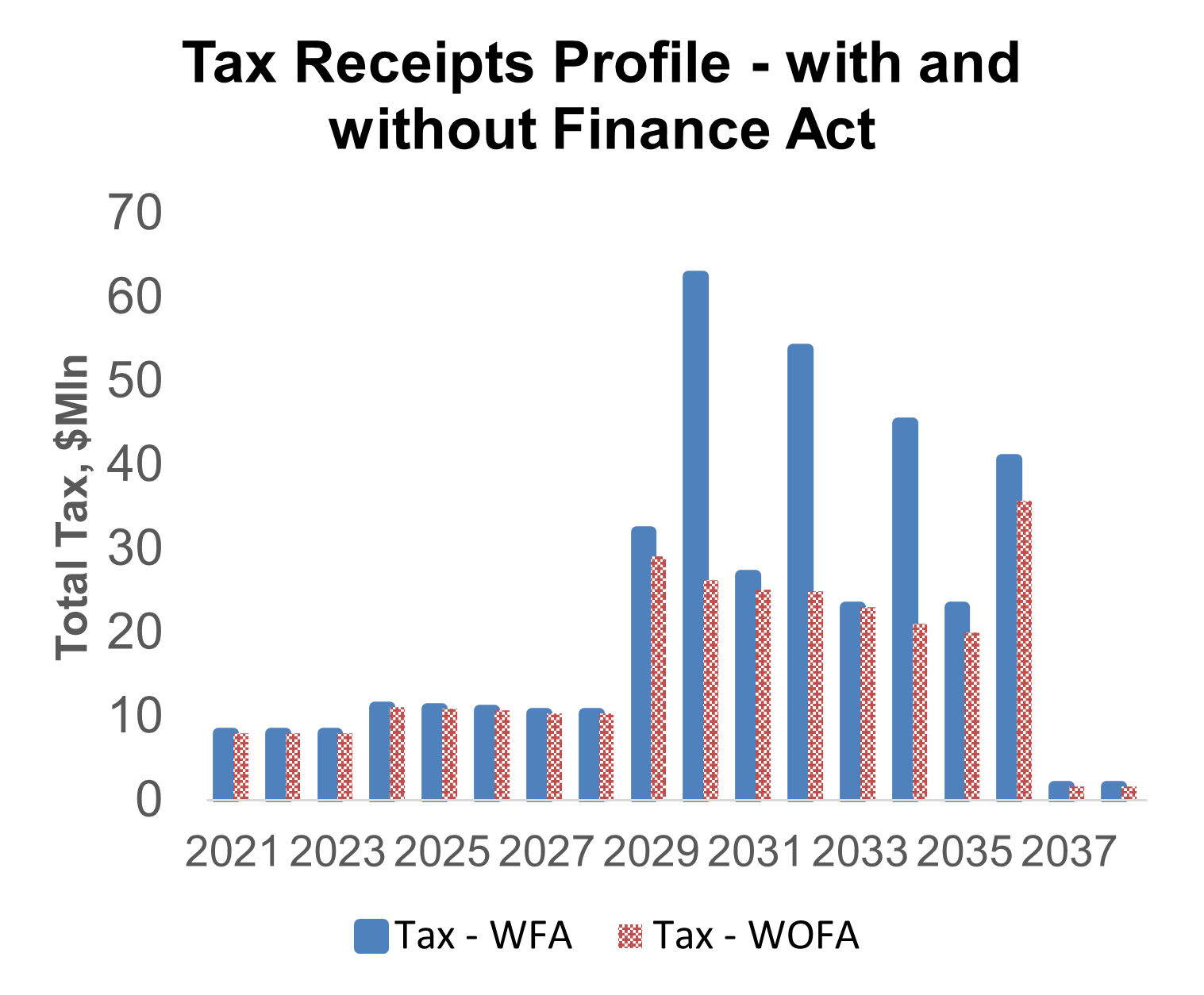The Finance Act 2020 (FA2020) passed in the 3Q 2019 in Nigeria is reviewed especially for its impact on the energy industry. The review is partly executed by modeling the specific provisions of the Act that impact gas utilization projects. The effect of the provisions on investor returns as well as the extent to which government objectives are met is ascertained.
This report conducts a qualitative assessment of the FA2020 to examine its provisions applicable to the oil and gas sector. To assess the impact of FA2020 on an energy project, a spreadsheet Discounted Cash Flow (DCF) economic model of a gas central processing facility is developed. A hypothetical $800 million, 300 MMcfd gas processing facility, which is 70% debt financed, is modeled by incorporating the provisions of the FA2020. The project metrics from both investor and government perspectives are then compared under the scenarios with and without the FA2020.
Modeling results reveal that the investor returns in the gas processing facility are still largely preserved at a healthy level, even as government take improves by $102 million due to the FA2020. Specifically, without the FA2020, investor returns an IRR of 21% while due to the FA2020, investor IRR declines to 20%. Lengthening the tenor of loans reduces the fraction of the financing costs that is tax deductible. The modeling result shows that, ceteris paribus, for one (1) year increase in loan tenor, the amount of financing cost that is tax deductible reduces by 5%. This meets one of the government’s objectives to prevent tax leakage via excessive financing costs.

This report recognizes several government pronouncements and policy positions to encourage domestic gas development. Financing plays a significant role in delivering gas projects. Consequently, evaluating the impact of the FA2020 becomes imperative to examine the effect of the Act on the ability to meet the strategic objective of powering the economy via gas while fulfilling Nigeria’s climate change commitments by deeper adoption of gas as a transition fuel.
The presentation can be downloaded here.
